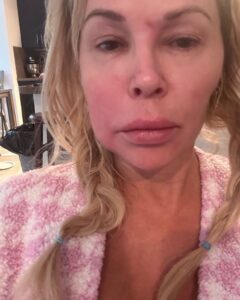A taste of reality: Saatchi & Saatchi’s new campaign with The Hygiene Bank


In partnership with The Hygiene Bank, Saatchi & Saatchi has launched a campaign that’s as surreal as it is serious. ‘The Edible Soap’ is a provocative new symbol of hygiene poverty in the UK, highlighting the absurd daily choices millions are forced to make between eating and staying clean.
When was the last time you had to choose between buying a bar of soap or your next meal? For over five million people in the UK, that’s not a hypothetical; it’s a horrifying reality. In response to this hidden crisis, Saatchi & Saatchi has partnered with charity The Hygiene Bank to launch The Edible Soap, a campaign that’s as compelling as it is bizarre.
At the centre of the concept is a real bar of soap that looks, tastes, and smells like baked beans on toast, because in one of the world’s wealthiest nations, hygiene poverty forces millions into an unthinkable trade-off: wash or eat.
Created in collaboration with ethical beauty brand The Good Wash, the soap is made with organic cacao butter, oat flour, avocado oil, tomato sauce, bean flavouring, toast flavouring, paprika, and a sprinkle of Celtic sea salt. It’s technically edible, and it also lathers.
It’s a shocking visual (and sensory) prompt designed to jolt the public into awareness and action. According to The Hygiene Bank, nearly 8% of the UK population is living in hygiene poverty. That’s 5.3 million adults having to forgo essentials like soap, deodorant, and sanitary products to put food on the table. Perhaps even more alarmingly, an estimated 20 million people in the UK still don’t know hygiene poverty exists.

“Like most interesting ideas, it all started with a pretty straightforward problem,” explains Henrik Ridderheim, senior creative at Saatchi & Saatchi. “In one of the world’s richest countries, millions of people have to choose between eating and washing every day, which is absurd. So, the idea of an edible soap felt like a suitably absurd solution.”
What began as a concept for a more traditional ad campaign quickly evolved into something much weirder and much more powerful. “With The Hygiene Bank being a small charity, we needed to create something that could start conversations by itself,” Henrik explains. “The idea of creating an actual Edible Soap felt like it had the right amount of weird in it.”
While the baked bean flavour may raise eyebrows (and stomachs), it also raises awareness (which is the point). Henrik says: “We wanted to create a product that could start its own stories, so even if you’d never heard of it before and just picked up a pack, it was designed to confront you with the shocking choice millions have to make every day.”
To build on that shock factor, the team enlisted the help of acclaimed chefs and hospitality personalities, including Chantelle Nicholson, Max Coen, Melissa Thompson, Ruben Dawnay, and Jay Mojaria. Each one cooked up recipes using The Edible Soap, not just to demonstrate its technical edibility but also to provoke real engagement and widen the conversation.
“We wanted to find a different way of using influencers and reach people who had never heard of hygiene poverty before, so the idea of Michelin-star chefs cooking with an edible soap to raise awareness felt like a smart solution,” Henrik notes.
The storytelling doesn’t end with a headline or a dinner plate. The campaign is also driving fundraising, with virtual bars of the soap available to buy on The Good Wash website. For £15, supporters can donate to The Hygiene Bank’s ongoing work, which includes supplying free hygiene products to individuals and families across the UK.

While the concept is surreal, the execution is grounded in strategy and social impact. Every element—from the soap’s physical form to its packaging and placement—has been carefully considered to raise awareness and spark a reaction.
Of course, creating something disruptive always walks a fine line. So, how do you ensure you’re provoking with purpose rather than shock for shock’s sake?
“I think it comes down to why you’re doing what you’re doing,” says Henrik. “If you’re doing something just to shock people, it might come out wrong. But if you’re doing something disruptive for the right reason, people will see that… People are smarter than research says.”
Early signs suggest the approach is working, as coverage has already gone international, and public response has been overwhelmingly positive. But as Henrik is quick to emphasise, this is just the beginning.
“The next step is trying to get as many signatures as possible for The Hygiene Bank’s petition, which will continue to support the important work they are doing,” he says. “Hopefully, we’ll get enough to create some real change.”
Part of that change includes a push to remove the 20% VAT on soap, a campaign pillar that The Hygiene Bank has been championing for some time. As CEO Ruth Brock puts it, “With public support, we can work toward a future where everyone has access to the hygiene essentials needed for health, hope, and opportunity.”
The Edible Soap is more than a novelty – it’s a jarring symbol of a crisis too often ignored. In a world of brand purpose, it’s a rare thing: a campaign with the guts to be both uncomfortable and unforgettable.
To donate, sign the petition, or learn more about hygiene poverty in the UK, visit their website.







